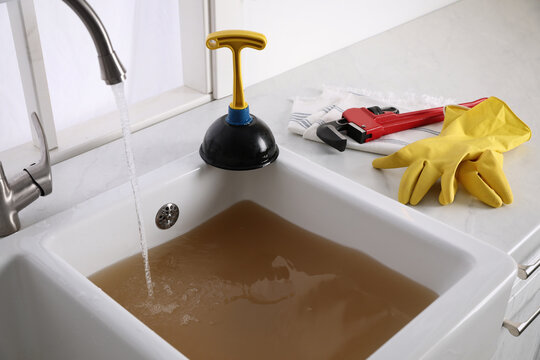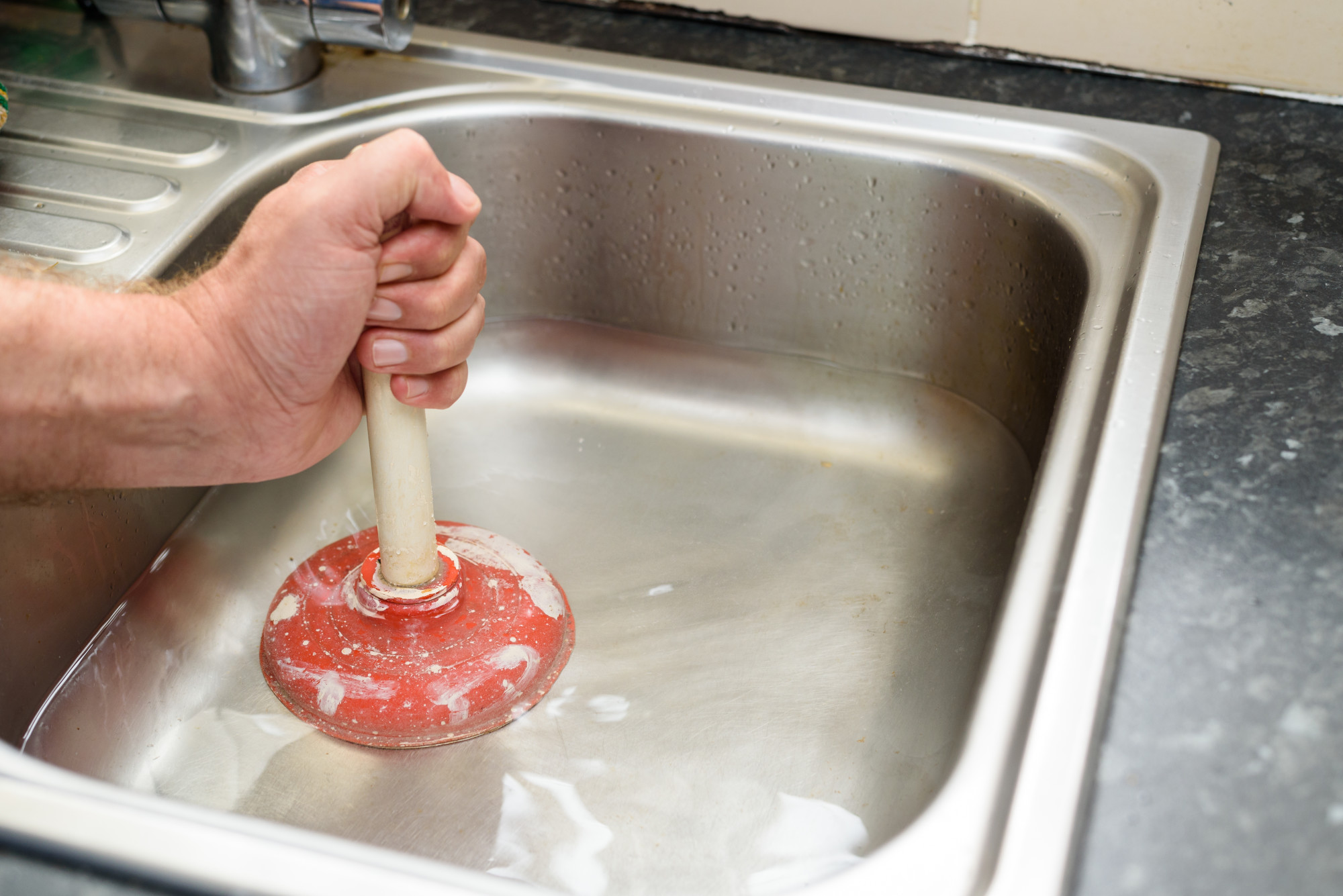Effective Plunger and Drain Cleaners Techniques: Top Practices
Effective Plunger and Drain Cleaners Techniques: Top Practices
Blog Article
Nearly everybody seems to have their unique piece of advice involving How to Unclog Your Sink with a Plunger.

Intro
Correct upkeep of household drains pipes is important for preventing obstructions and making sure smooth water flow. Among the secret tools in every property owner's toolkit is the plunger, along with numerous drain cleansers designed to tackle stubborn clogs efficiently. This post checks out exactly how to make use of bettors and drain cleaners successfully to maintain your drains flowing openly.
Section 1: Comprehending Plungers
Types of Plungers
There are numerous sorts of bettors readily available, each developed for different sorts of drains pipes and blocks. The most common kinds consist of mug plungers, flange bettors, and accordion plungers.
Just How Plungers Work
Plungers work on the principle of creating pressure and suction to displace obstructions. When appropriately applied over a drain, they develop a vacuum that can take out debris or separate blockages.
Picking the Right Bettor
Choosing the best plunger depends on the kind of drain and the nature of the obstruction. Mug plungers are excellent for sinks and tubs, while flange bettors are much better suited for commodes as a result of their design.
Common Errors with Plungers
Staying clear of these mistakes makes sure efficient plunging: improper seal around the drainpipe, inadequate force, and unclear surrounding particles.
Area 2: Using Plungers Efficiently
Prep work
Prior to plunging, ensure the bettor covers the drain completely and develops a tight seal. Clear any noticeable debris around the drain opening.
Method
Start with mild diving activities to construct suction. Rise stress slowly, using a steady rhythm. Repeat as required until the drain gets rid of.
Troubleshooting Tips
If plunging doesn't work, attempt readjusting the seal, using oil jelly for a much better seal, or utilizing a different kind of plunger.
Section 3: Comprehending Drainpipe Cleaning Company
Types of Drainpipe Cleaning Company
Drain pipes cleaners can be chemical or enzymatic. Chemical cleaners make use of strong chemicals to liquify obstructions, while enzymatic cleansers use all-natural enzymes to break down organic matter.
Exactly How Drain Cleaning Company Work
Chemical cleaners react with clogs to liquify them, while enzymatic cleansers break down organic materials like hair and grease without harming pipes.
Safety and security Factors to consider
Always wear gloves and eye protection when utilizing chemical drain cleansers. Make certain ample ventilation and adhere to manufacturer guidelines carefully.
Eco-Friendly Alternatives
Think about making use of vinegar and baking soft drink or enzyme-based cleansers for environment-friendly alternatives that are more secure for pipelines and the setting.
Section 4: Using Drain Cleaning Company Efficiently
Application Methods
Pour chemical cleaners straight right into the drainpipe opening. Allow them to work for the recommended time prior to flushing with warm water. Chemical cleaners must rest overnight.
Precautions
Avoid mixing various sorts of cleansers, as this can create hazardous fumes. Never ever use chemical cleansers in conjunction with a plunger, as spilling can happen.
Managing Persistent Obstructions
For persistent blockages, take into consideration utilizing a pipes serpent or calling an expert plumber to avoid damage to pipelines.
Final thought
Finally, understanding just how to utilize bettors and drain cleansers successfully is important for preserving healthy plumbing systems. By choosing the right tools and techniques, house owners can take on small obstructions and protect against major plumbing problems down the line.
How to Use a Plunger to Unclog a Drain
The humble plunger is a simple yet effective tool for breaking clogs in sinks, tubs and toilets. This handy tool is easy to use. You can make the most of its power if you understand how it works. Ready to dive in? Here’s what you need to know.
Safety First!
Never use a plunger with drain chemicals. Water will splash as you work, and the chemicals can spatter, burning skin and eyes. It’s a good idea to use rubber gloves and wear safety goggles when you work on a clog.
Choose the Right Tool for the Job
Plungers come in two different styles. Sinks, bathtubs and showers require a cup plunger. Like its name suggests, the rubber end is shaped like a cup. Use a flange plunger on toilets. These plungers have a rubber funnel extending from the cup. A plunger needs to be big enough to cover the drain.
Ready, Set, Plunge!
Coat the rim: Coat the plunger rim with petroleum jelly. This helps make a better seal.
Block outlets: Hold a wet rag over nearby outlets such as the overflow vent or the drain in a second sink.
Release air: Insert the plunger at an angle into the water. Water will displace air in the cup. A water-filled cup is more forceful than one filled with air.
Keep the plunger upright: Hold the plunger perpendicular to the drain. Use fast, forceful strokes, but make the first stroke gentle. The first stroke can create a splash if the cup still contains air. Thrust the plunger 15 to 20 times.
Snap off the plunger: The final stroke should be a strong upward motion that ends when the plunger snaps off the drain.
Repeat the process: you may need to repeat this sequence several times. When the water drains away, your work is done. High-five! https://plumbernw.com/blog/how-to-use-a-plunger-to-unclog-a-drain/

Application Methods
Pour chemical cleaners straight right into the drainpipe opening. Allow them to work for the recommended time prior to flushing with warm water. Chemical cleaners must rest overnight.
Precautions
Avoid mixing various sorts of cleansers, as this can create hazardous fumes. Never ever use chemical cleansers in conjunction with a plunger, as spilling can happen.
Managing Persistent Obstructions
For persistent blockages, take into consideration utilizing a pipes serpent or calling an expert plumber to avoid damage to pipelines.
Final thought
Finally, understanding just how to utilize bettors and drain cleansers successfully is important for preserving healthy plumbing systems. By choosing the right tools and techniques, house owners can take on small obstructions and protect against major plumbing problems down the line.
How to Use a Plunger to Unclog a Drain
The humble plunger is a simple yet effective tool for breaking clogs in sinks, tubs and toilets. This handy tool is easy to use. You can make the most of its power if you understand how it works. Ready to dive in? Here’s what you need to know.
Safety First!
Never use a plunger with drain chemicals. Water will splash as you work, and the chemicals can spatter, burning skin and eyes. It’s a good idea to use rubber gloves and wear safety goggles when you work on a clog.
Choose the Right Tool for the Job
Plungers come in two different styles. Sinks, bathtubs and showers require a cup plunger. Like its name suggests, the rubber end is shaped like a cup. Use a flange plunger on toilets. These plungers have a rubber funnel extending from the cup. A plunger needs to be big enough to cover the drain.
Ready, Set, Plunge!
Coat the rim: Coat the plunger rim with petroleum jelly. This helps make a better seal. Block outlets: Hold a wet rag over nearby outlets such as the overflow vent or the drain in a second sink. Release air: Insert the plunger at an angle into the water. Water will displace air in the cup. A water-filled cup is more forceful than one filled with air. Keep the plunger upright: Hold the plunger perpendicular to the drain. Use fast, forceful strokes, but make the first stroke gentle. The first stroke can create a splash if the cup still contains air. Thrust the plunger 15 to 20 times. Snap off the plunger: The final stroke should be a strong upward motion that ends when the plunger snaps off the drain. Repeat the process: you may need to repeat this sequence several times. When the water drains away, your work is done. High-five! https://plumbernw.com/blog/how-to-use-a-plunger-to-unclog-a-drain/

I have been very fascinated by Here's How to Correctly Use a Toilet Plunger and I hope you appreciated the post. Enjoyed reading our article? Please quickly share it. Help others find it. Thanks for being here. Revisit us soon.
Click Here Report this page